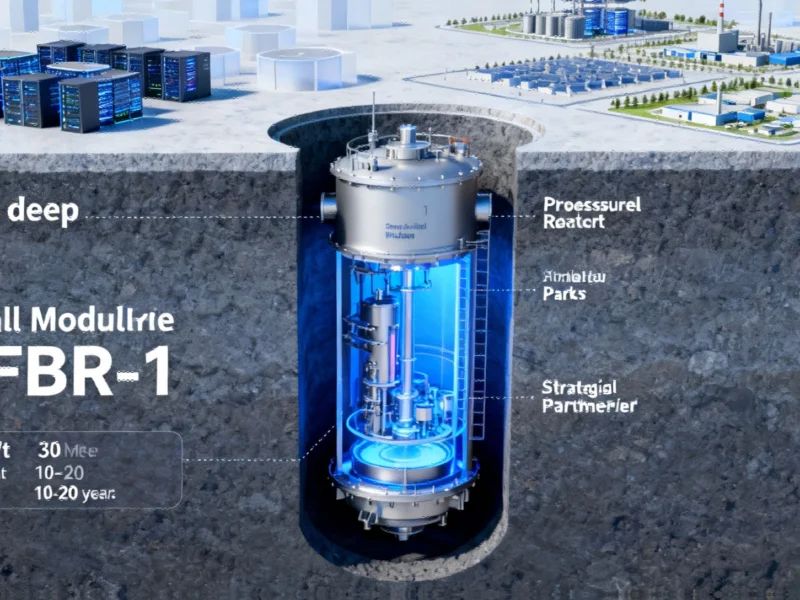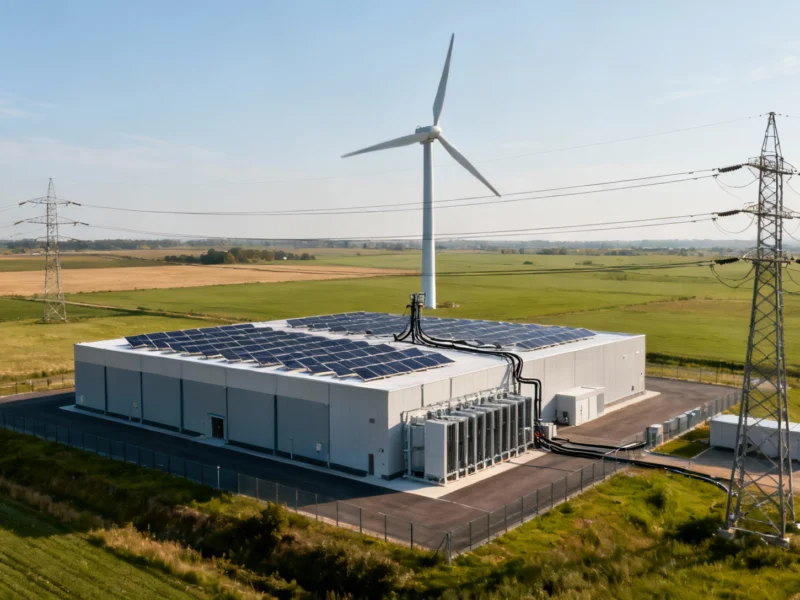Nuclear Developer Secures 12.5GW in Potential Capacity Agreements
Advanced nuclear energy company Deep Fission has signed letters of intent for 12.5 gigawatts of potential capacity with data centers, co-developers, industrial parks, and strategic partners, according to company reports. Sources indicate the non-binding agreements outline plans to explore commercial deployment of the company’s innovative small modular reactor systems, though specific data center partners were not disclosed.
The company’s CEO Liz Muller stated that “the world is transforming before our eyes, and there is a race to secure the energy needed to fuel the robust growth in AI and data centers.” Analysts suggest this reflects growing industry recognition that traditional power sources may struggle to meet the exponential energy demands of computational infrastructure.
Deep Borehole Reactor Technology Pioneered
Deep Fission is developing what reports describe as a “mile deep” SMR system known as the Deep Fission Borehole Reactor 1 (DFBR-1). The reactor is reportedly a pressurized water reactor that produces 15MWt thermal and 5MWe electric capacity with an estimated fuel cycle between ten to twenty years.
According to the company’s technical specifications, the DFBR-1 is designed for placement in a 30-inch borehole, utilizing deep geology to provide natural pressurization and containment. The report states this approach eliminates the need for thick-walled pressurization vessels since hydrostatic pressure at one-mile depths matches that of standard nuclear power reactors.
Safety and Deployment Advantages Claimed
Company officials claim that nuclear containment is achieved through geology rather than engineered systems alone. Sources indicate the company asserts that even if fully spent fuel were released, there would be no significant radioactive danger to the public or contamination of aquifers.
The reactor is reportedly designed for retrieval via permanently attached cables and can be replaced by new units in adjacent boreholes or the same borehole at shallower depths. This approach, analysts suggest, could potentially streamline refueling and maintenance operations compared to traditional nuclear fission facilities.
Growing Industry Partnerships and Funding
In January, the company reportedly partnered with Endeavour Energy to co-develop 2GW of nuclear energy for Endeavour’s global portfolio of data centers operating under the Endeavour Edged brand. The first reactors are expected to be operational by 2029, according to project timelines.
The Berkeley, California-based company, founded in 2023, announced a $4 million pre-seed funding round last August to accelerate hiring, regulatory approval, and commercialization efforts. This development comes amid broader market pressures affecting various technology sectors.
DOE Recognition and Industry Trend
This August, Deep Fission was selected as one of 11 advanced nuclear reactor projects to join the US Department of Energy’s Nuclear Reactor Pilot Program. As part of the program, the DOE will support projects to construct, operate, and achieve criticality of at least three test reactors using the DOE authorization process by July 4, 2026.
The move toward nuclear partnerships reflects a broader industry trend, with major technology companies increasingly seeking reliable, carbon-free power sources. Over the past year, Amazon, Google, Data4, Oracle, Switch, and Equinix have all reportedly signed agreements with SMR developers, mirroring similar strategic technology partnerships seen across the computing sector.
Market Context and Future Outlook
The rapid embrace of advanced nuclear technology comes as data center operators face increasing pressure to secure sustainable, high-density power sources. While letters of intent are generally not legally binding, industry observers suggest they represent significant market interest in alternative energy solutions for power-intensive computing applications.
As the company progresses through regulatory processes and toward its 2029 operational target, the success of its deep borehole approach could potentially influence broader adoption of geographically distributed nuclear power solutions, particularly for remote or land-constrained data center locations.
This article aggregates information from publicly available sources. All trademarks and copyrights belong to their respective owners.



